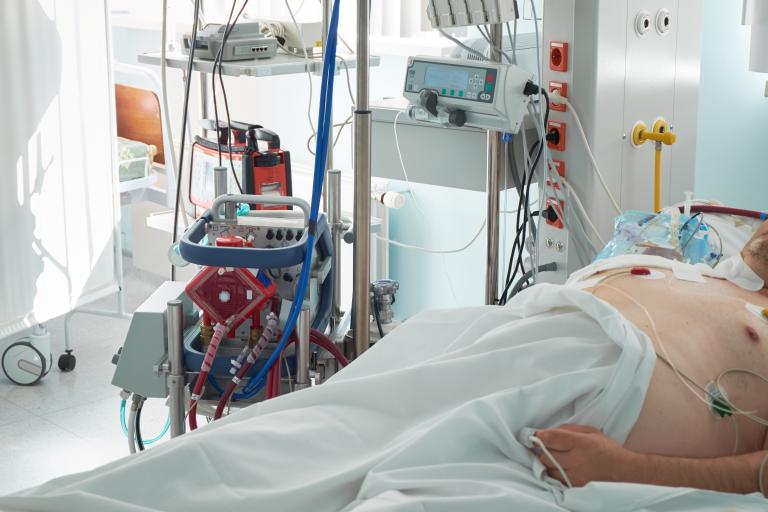The most serious complication that a person can suffer shortly after receiving a heart transplant is primary graft failure, responsible for 30% of deaths in the first month after the intervention. To treat this failure, the patient must be connected to circulatory and respiratory mechanical assistance, the venoarterial extracorporeal membrane oxygenation (VA-ECMO), which temporarily replaces their cardiac and pulmonary functions. To apply VA-ECMO, polyurethane cannulas are used to establish the circuit for blood circulation and its extracorporeal oxygenation. The cannulation procedure can be peripheral, through the femoral artery and vein, or central, through the right atrium and aorta, depending on the surgical access.
A multicenter study led by the Bioheart group of the Bellvitge University Hospital (HUB) and IDIBELL confirms that patients to whom peripheral cannulation is applied in VA-ECMO register, three months after the intervention, a superior survival in 20% to those who receive central cannulation. The work has been published in The Journal of Heart and Lung Transplantation.
The study has been carried out based on the retrospective analysis of 2,376 heart transplants performed between 2010 and 2020 in 14 hospitals throughout the country that have participated in the Spanish Heart Transplant Registry. In addition to the differences between central and peripheral cannulation, researchers have also analysed the potential benefits of early VA-ECMO support (less than 3 hours after transplantation) versus later support (more than 3 hours after), without finding significant differences.
“Although some previous works suggested that early implantation could improve the prognosis of patients with primary graft failure, one of the main conclusions of our study is that there are no significant differences between early and delayed initiation, while peripheral cannulation it does show clear benefits in comparison with the central cannulation”, explains Dr. José González Costello, coordinator of the Heart Failure Unit of the HUB Cardiology Service, member of the IDIBELL Bio-Heart group, and principal investigator of this study.

